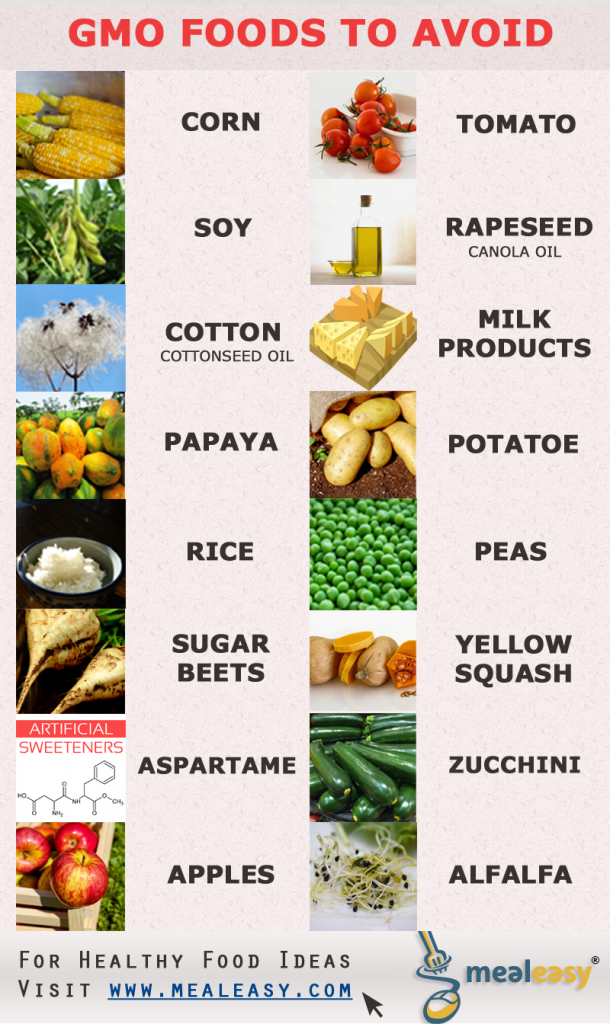Archive for the ‘Articles’ Category
MealEasy Launches NEW Enhanced Mobile Meal Planning
July 19 2017
We are pleased to announce the release of an enhanced mobile version of MealEasy! Now even easier to use on ANY mobile device!
It’s now even easier on your mobile device to:
- Navigate the entire web app
- Schedule & view meal details
- Access your grocery list on the go
- And prepare all the delicious and healthy meals!
Works on just about any device including the latest iPhones, Android phones, iPads/tablets, and of course also on PC or Mac.
Did you know MealEasy is NOT a recipe site?
MealEasy is an online service that helps ANYONE improve their health by showing EXACTLY what to eat and how to prepare it using healthy whole food ingredients. There’s NO guesswork involved!
All our make-at-home meals are designed with input from health professionals, following strict established guidelines from health authorities. Combined with MealEasy’s planning system, you are guaranteed to be on the right track as soon as you start.
We are hear to help you and sincerely want what is best for you, with no advertising or outside interests.
Why Consider It?
Though you may think you are eating healthy, there is a good chance you are not.
Over 70% of the American population over age 20 is now obese and the stats are getting much worse! This is linked to the top life threatening health conditions. The ROOT cause of all this is that we are now unknowingly eating primarily processed VERY unhealthy food. If we want a better future for ourselves and our children something has to be done!
That’s why we created MealEasy. To make it easy for anyone to improve their health and finally KNOW they are eating healthy.
Join today and your health and family will thank you!
Are We Eating Real Food?
May 31 2017
Most of us are obsessed with food that tastes good, but don’t realize it’s often not suited for human consumption!
The reason we choose these processed foods is for convenience, however, there is an ENORMOUS price that we pay for that in terms of our health. We are under the assumption that healthy food does not taste good, but that’s far from the truth.
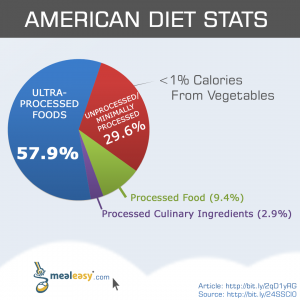 During recent years our diet has devolved to be primarily made up of “ultra-processed foods” that offer little nutritional value and are linked to our most serious health issues. In fact, 57.9% of what Americans now eat is considered ultra-processed, according to a study published in the BMJ Open medical journal!
During recent years our diet has devolved to be primarily made up of “ultra-processed foods” that offer little nutritional value and are linked to our most serious health issues. In fact, 57.9% of what Americans now eat is considered ultra-processed, according to a study published in the BMJ Open medical journal!
By ultra-processed, it generally refers to foods composed of additives, colors, flavors, sweeteners, emulsifiers, that emulate the qualities of real unprocessed ingredients, in order to improve qualities of the final product and/or hide undesirable qualities. In other words, it is food that is intentionally manipulated to make consumers favor it more.
This side effects are much poorer health, as exhibited by the deteriorating health of our nations.
What We Eat Is No Longer Natural Food!
On a day-to-day basis, we don’t even think about what we are eating. This is illustrated by a sobering question… Did you know that America’s unprocessed vegetable consumption is less then 1%! Yes, you read that right!
We are no longer aware of what we put in our bodies at each meal and most of it is not real food!
Our bodies were not designed to deal with “food” that isn’t real food. We evolved without anything processed in our diets, and suddenly our generation is bombarded with it. These sudden dietary changes have resulted in numerous serious health conditions all being linked to the fake food we are consuming.
The sad truth is most of us are brainwashed by society and commercial interests to continuing eating the way we do. It’s convenient and everyone is doing it. We continue eating convenience foods, fast foods, frozen meals, boxes foods, restaurant meals; none of which are natural.
What’s The Solution?
Luckily, the solution is simple. The key to solving this is getting back to what our ancestors did. Eating real foods, made from whole food ingredients, made at home from scratch (raw natural ingredients).
You may be thinking, it’s too hard, or times have changed. And if you are, then you’re on the same unfortunate path as most of us.
Eating right doesn’t have to be complicated and it starts with cutting or severely reducing your consumption of processed foods. Learn more about how to do that here.
If you want a quick and easy way to get on the right track, you’re in luck! That’s exactly why we created MealEasy®. Consider joining the thousands who already have, and start a better future as a result. One small step in the right direction is all it takes to begin.
The Health Benefits of Wild Rice
May 17 2017
Wild Rice: A Nutritious and Tasty Alternative
It can sometimes be difficult finding ingredients that tick all the right boxes when it comes to taste, nutrition and affordability. And it is even more of a challenge if you are also having to take food intolerances or special dietary requirements into account. Yet wild rice could just be the answer to your prayers. If you’ve never cooked with it before, now could be the time to give it a try.
Contrary to what you might think, wild rice is not just a special variety of the white or brown rice with which you are familiar. In fact, it is not really a rice at all, but a type of aquatic grass. It contains no grain and no gluten, meaning it is even suitable for those with the strictest dietary constraints; essentially, wild rice is packed full of nutrients that we all need for a healthy body and immune system.
Rice That Is Not Rice
Wild rice is a term that is used to describe four distinct species of grass that are mostly native to North America. Its popularity has increased over recent years as people have got wise to its health benefits and rich, nutty flavor. The seeds are larger and more densely-packed with nutrients than conventional rice, meaning it packs a real punch from a nutritional perspective.
Ounce for ounce, it contains double the protein content of brown rice and more than ten times the selenium content – a vital mineral for the production of antioxidants that helps keep the body healthy and the immune system working properly.
Cooking With Wild Rice
Wild rice can be added to your regular diet as a substitute for white or brown rice as a healthy accompaniment to any meat, fish or vegetable dish. It is cooked in much the same way, but bear in mind that it will typically need at least 45 minutes boiling or steaming time, so schedule the rest of your dish accordingly.
It is also a great basis for a nutritious salad that is a little out of the ordinary, but is quick and easy to prepare.
The Next Great Superfood?
Healthy, nutritious and easy to prepare, yet tastes great and is suitable for those on a vegan, grain-free or gluten-free diet. It is easy to see why wild rice is gaining in popularity and being hailed as the latest superfood.
Join the revolution and try some today – you might never go back!
Cinnamon: A Simple Ingredient Can Have Incredible Power
March 21 2017
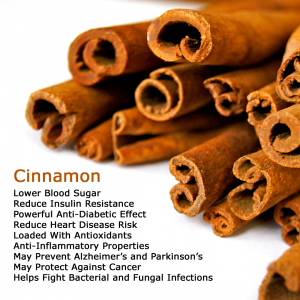 Did you know that cinnamon, a common ingredient that’s found in many of our own cupboards and used in many well know recipes, has some amazing properties!
Did you know that cinnamon, a common ingredient that’s found in many of our own cupboards and used in many well know recipes, has some amazing properties!
Just a few of the things it can do for your health includes:
- Lowering blood sugar
- Reducing insulin resistance, including powerful anti-diabetic effects
- Reducing heart disease risk
- Providing you with beneficial antioxidants
- Exhibiting anti-inflammatory properties
- Potentially helping to prevent Alzheimer’s and Parkinson’s disease
- Protecting against cancer
- Fighting bacterial and fungal infections
Recent studies also indicate it may be beneficial for those with HIV.
Wow! That’s a lot of punch in something so simple that we all take for granted in our everyday lives. The cure is really in our cupboard isn’t it!?
So the next time you look at your food, remember it’s more then just something you put in your mouth to feed hunger. The choices you make with your food can have dramatic effects on your health if used the right way.
We created MealEasy as a family with this in mind. If you would like to boost your health to new levels, please consider giving MealEasy a try. Whether you use it to make one meal or hundreds, you’ll be making a big impact on your well-being!
Please follow us on Instagram, Facebook, or Twitter for more helpful posts!
Believing And Having A Plan Will Change Everything!
January 11 2017
It’s a proven fact that 90% of traditional diets fail, so what is your chance of succeeding with a diet you may be considering for weight loss, or weight control?… 10%…. that’s all!!
Losing weight is one thing, keeping it off is another.
Planning is the key to your success; having a plan that is specific to losing weight is the ultimate solution to maintaining healthy weight for life.
BELIEVING CAN CHANGE EVERYTHING!
Believe that your decision today will make a huge difference in your life. It will be inspirational and rewarding experience bringing an incredible transformation into your personal life.
Your health; your family’s health; your family life; your self-esteem, all being affected.
- Believe that it is about the food we eat. How much we eat plays a role to some degree, but what we eat is what matters the most!
- Believe that healthy food can also taste good. Preparing your own food allows you to modify the taste to your liking, still keeping it healthy. Preparing your own food can also be so much fun and above all, it’s rewarding.
- Believe you can do it. Frustrating!? Trying to eat the right food can be frustrating. Having a plan to guide you in making decision with what to eat every day is the key.
Planning is smart; Planning is time saving; Planning is money saving, but about all planning gives you an overview of what you eating not just one day, but over several days which is what is important in achieving the ultimate control over your food consumption.
BUT, YOU MUST BELIEVE!
How do we know?
Well, 12 years of being involved with people like you, trying to make sense of where to begin and then how to make healthy eating a way of life, gave us a true sense of where the problem is and why weight problems have now reached epidemic proportions in North America.
The MealEasy® Weight Loss Meal Plan will help you to facilitate the change you may be considering. We have developed MealEasy to help people to achieve their goals. Why a plan? Because… “A goal without a plan is just a wish.” ― Antoine de Saint-Exupéry
For fast facts and helpful tips, please read on.
Sobering Facts About Being Overweight – What Can One Expect
- Significantly Shorter Lifespan
The top causes of death in the United States by far include heart disease, cancer, stroke, diabetes and dementia. They are all linked to being overweight. A recent 2014 study at McGill University, published in The Lancet Diabetes & Endocrinology found that being overweight shortens one’s life by almost a decade! Think about that for a moment… - Many Years Of Reduced Quality of Life
Not only that, but the study also found that it deprived people of 19 YEARS of healthy living! Imagine what you could do with those extra years! - The Problem Getting Worse
If that wasn’t enough, the obesity epidemic is getting worse! Efforts to slow it down are not working, because the root cause (the poor quality food choices we make) is continuing to be ignored. For the first time in roughly 20 years, a National Center for Health Statistics (NCHS) study has shown a decline in life expectancy, which is believed to be in substantial part due to the growing obesity issue.
That is so scary! So, were do we go from here? Let’s look for the closest mirror we can find, look into it and say: Yes, I am worth it and I owe to myself and my family… and then do it! Do it NOW! There is no other way and the longer you wait the harder it gets. The time is now!
Were do I start?
- Start By Eating More Fresh Whole Foods.
The foods we often eat are not suitable for human consumption. Don’t give it to your pets either, that is, if you love them!
1) Eliminate all processed foods from your kitchen. As many as you can to start with.
2) Eliminate all sugary drinks, snacks, and anything else containing sugar, artificial sweeteners (including diet soda), or high fructose corn syrup.
3) Stop eating out! You have no idea what’s in the food you eat, when you eat out.
- Educate Yourself
Start learning about proper nutrition. This includes buying and eating primarily whole food ingredients like fresh vegetables, fruits, nuts, whole grains, unprocessed meats and fish, etc. Read the labels on everything you buy. Pay attention to what you drink too (e.g. zero-calorie pure water is your best source of hydration – not manufactured drinks).
- Cook At Home
Only by cooking your meals at home from scratch, will you have total control of what you put in your body (MealEasy can help with that). It doesn’t have to be complicated and it doesn’t have to take lots of time… and yes it CAN taste amazing!
Responsibility Lays With Us
No government, food producer or school has responsibility for our own health – only we do, period!
Seek Help
Try MealEasy – Risk Free
In 2005 as a family we started MealEasy with your health in mind, to take all the guesswork out of making better food choices. Please consider taking matters into your own hands and sign up for any of MealEasy’s six plans including the Weight Loss Meal Plan. All are designed by professionals to be healthy and get you on the right track to improving your health one meal at a time.
The benefit of having a plan is in knowing ahead of time about choices you are making. Sporadic decisions lead to guesswork and wrong food choices!
Genetically Modified (GMO) Foods To Avoid
November 17 2016
 In recent years there has been great controversy on the use of genetically modified foods; sometimes referred to as genetically engineered foods or Genetically Modified Organisms – or “GMO”. This has particularly become a growing issue in the USA and Canada, and affects large portions of our food supply and potentially the health of everyone!
In recent years there has been great controversy on the use of genetically modified foods; sometimes referred to as genetically engineered foods or Genetically Modified Organisms – or “GMO”. This has particularly become a growing issue in the USA and Canada, and affects large portions of our food supply and potentially the health of everyone!
If you value your own and your family’s health, please read this important article that can protect and improve one’s health for years to come!
Please share and help spread the word.
What Are Genetically Modified Foods?
GMO foods are foods that have been modified from their original natural form as found in nature using genetic engineering techniques that alter the DNA structure of the food.
Genetically modified foods also include modification to livestock, and seafood products.
Why Is It Being Done?
These techniques allow for industry to introduce new desirable traits to foods. Examples include better resistance to pathogens, herbicides and to help improve the nutrients provided.
The underlying reason is to maximize production and sales of food. This includes:
- Increasing the crop yields for farmers
- Adds more nutritional value to crops
- Reduces the need for pesticides
- Helps to decrease food prices for consumers
- Increase profits for food producers
- Industry testing indicates it is safe for human consumption
What Foods Commonly Contain GMOs?
While browsing the isles at the grocery store, be on the look out for the most common foods that are likely to be genetically modified, unless otherwise labeled.
The most common foods include corn, soy, cotton (used to make cottonseed oil), papaya, rice, sugar beets (commonly used to make sugar), aspartame (a common artificial sweetener), tomatoes, rapeseed (used to make canola oil), milk/dairy products, potatoes, peas, yellow squash, zucchini, apples and alfalfa; in no particular order.
Note that this list applies to ANY products that are derived from these ingredients!
More recently animal based products such as salmon have begun to be introduced to Canadian and USA food supplies, without the necessity to label them as GMO foods.
Are Genetically Modified Foods A Problem?
There is lots of controversy on the use of GMOs. Some of the main concerns include:
- Increasing Use Of Pesticides: Most GMOs are designed to require the use of pesticides and herbicides. Manufactures have suggested that use of GMOs would reduce the need for these chemicals. Unfortunately, this does not seem to be the case, with the use of pesticides/herbicides increasing instead, according to this recent study.
- Health Risks: According to Jeffrey Smith, a leading national expert on the dangers of GMOs, we don’t know for sure if modifying genes can lead to increased health risks including:
- The possibility of releasing more allergens, toxins or the introduction of new diseases.
- The negative effect of herbicides on human intestinal bacteria and diseases related to intestinal health.
- Increased risk of cancer according to recent peer reviewed studies.
- No Long Term Studies: The data is still not in as to the long term effects of genetically modified food consumption. It remains to be seen if it is truly safe for people to eat on a continuing basis. The FDA has not conducted such studies before approving the use of GMOs.
- Environmental Impacts: Both GMO crops and the increased need of pesticides/herbicides negatively impact the environment. Increased use of pesticides and herbicides pollute the air, water and soil in which they are used. Use of GMOs cause cross-pollination issues with other plant life, destroying natural plant life, and causing additional unknown consequences and once they are introduced to an environment their effects are there to stay.
Farmers and studies have also confirmed increasing numbers of superbugs and superweeds that are becoming more and more of a problem as a result of the use of GMOs.
What Can We Do?
It’s becoming increasingly difficult to know what food is in fact genetically modified. Due to new legislation and push from the industry giants, labeling of GMO foods is being allowed to be hidden from consumers who want to make an informed decision when buying food. As a result of corporate interests driving government policies, it is not required by law for foods to be explicitly labeled as genetically modified in the United States.
New law states that food must be identified using obscure methods such as a website address, QR code, or telephone number placed on food products. In Canada there are no requirements for labeling of GMO foods.
Here Are Some Tips to Help You Avoid GMO Foods
- Avoid Processed Foods: In fact, if you buy processed foods you are very likely to be eating GMO foods more often than not.
- Buy GMO Free or Organic: Whenever possible buying foods marked as “organic” or “GMO free” can help. It should be noted that “organic” does not necessarily mean “GMO free”, however, items labeled as organic do need to be 95% GMO free.
- Reduce Your Exposure: Limit your consumption of commonly affected foods or look for GMO-free versions. Especially for the most commonly affected foods (see the list of common GMO foods here).
Making your own meals and having full control of what you put in your body and your family’s stomach is key. By planning ahead and using smart planning tools such as MealEasy, it’s easier than you think!
The Hidden Dangers of Processed Foods
October 12 2016
Did you know that the eating processed foods is one of the leading causes of major health issues and weight problems? You may unknowingly be eating these unhealthy foods routinely. Find out how to reduce your consumption of these deadly foods. Do so and you can improve your wellbeing significantly, safeguarding your most precious asset – YOUR HEALTH! 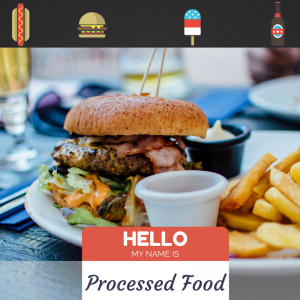
You’ve likely heard the words “processed food” in the past, and perhaps don’t think of it much while browsing the isles at the grocery store each week.
You may be wondering “What are processed foods?”… Well, you can think of them as any food that is unnatural, or does not occur naturally in nature. This includes foods that have been altered from their original form by addition of additives, preservatives, hormones, vitamins and minerals, heat treatments (that destroy natural enzymes), fatty acids, chemicals or that contain genetically altered ingredients.
Why Do Processed Foods Exist?
There are several reasons including to prolong the shelf life of the food, “enhance” flavor, make the food more esthetically appealing, and in general to try to get you (the consumer) to buy more and reduce associated cost to the food producer. Most processed foods are design with convenience in mind, ahead of your wellbeing.
Types of Processed Foods
Browsing the grocery store, you’ll begin to recognize that more and more of the foods we eat today are processed in some form. We as consumers need to keep our eyes open when purchasing food. This includes reading labels. It’s our own responsibility to choose what we eat carefully and individually to take control of our own health – no one else will do it for us!
In general most foods that are packaged, canned, or in some cases frozen are very likely to be processed in some form. Many have a very long shelf life.
More specifically, you’ll likely want to avoid these common culprits:
- Refined sugar including its variations such as corn syrup / high fructose corn syrup, dextrose, fructose, maltodextrin, sucrose, etc.
- Refined carbohydrates such as items with refined white flour.
- Artificial sweeteners such as aspartame (Equal / NutraSweet), Neotame, Saccharin (SugarTwin / Sweet’N Low) and Sucralose (a.k.a. Splenda)
- Chemically processed foods including artificial coloring, flavors, added textures or food additives.
- Soft drinks, or drinks with added sugar (including any of the refined sugar or artificial sweeteners, colorings or flavors)
- Fast foods
- Junk food
- Processed meats
- Frozen foods
- Refined wheat flour, including bleached white flour
- Boxed food items
- Margarine and hydrogenated vegetable fat
- Refined vegetable oil
- Canned items
- Genetically Modified Organisms (GMOs) and Foods – Hint: By avoiding the foods listed above, it will help reduce your exposure to the ever increasing use of unnatural and potentially detrimental effects of genetically modified foods that are more commonly used in processed foods.
In addition to avoiding the foods listed above, whenever possible it’s advisable to eat organic products including produce, milk product and meets, as organic foods are subject to less processing and reduce to odds of the damaging effects of processed foods. The more processed foods you eat, the more you are subjecting your body to its dangers.
Before explaining the dangers, it should be noted that not all processed foods are bad food choices. Though it’s always preferable to eat fresh whole foods that resemble their most natural form, some processed foods can be eaten safely as part of a balanced diet, and/or in moderation. For example, frozen vegetables or fruits are not necessarily bad choices though fresh alternatives of course are healthier.
The processed foods that are of concern are more so the chemically processed foods.
What Are the Dangers of Processed Foods?
There’s no question you want to slash your risk of disease, improve your overall health and live a longer happier life. We all do, but most of us don’t take action and don’t realize the MOST EFFECTIVE way to achieve this is by paying closer attention to what we eat!
Studies confirm that the effects of processed foods are making us sicker, fatter and shortening our lives at increasing rates.
Processed foods generally contain high amounts of refined sugar and/or carbohydrates (see the list of “refined sugar” types above). This is a major concern, as the human body was never designed to eat so much sugar. Excessive sugar consumption has been linked to many diseases including Alzheimer’s disease, diabetes, heart disease, obesity and even cancer. Consuming too much refined carbohydrates in general can also lead to issues such as insulin resistance; a precursor to many chronic diseases.
You are likely unaware of just how much sugar is in typical items you use regularly. Items that may not seem like they contain much sugar, in fact have very high amounts and it all adds up throughout the day.
On top of this, processed foods contain artificial ingredients such as preservatives, colorings and flavors that are designed in the interest of food manufactures, and not your health. Studies confirm that many of these have been linked to allergic reactions, cancer, and other diseases.
Another major issue is the amount of unhealthy fats, known as trans fats. These fats are commonly used in processed items, and has been linked to many health issues including heart disease.
These convenience foods also lead to one of the developing world’s biggest issues… obesity. Processed foods generally have much more calories vs natural alternatives and have less fiber content. This leads to eating too many of the wrong type of calories and in the end, weight gain.
|
Interestingly, recent studies on saturated fats and heart disease, show whole food sources such as eggs, dairy products, meats, etc. are healthy to eat and are not linked to heart problems; so long as trans fats are avoided.
Think twice when you eat processed foods – they’re more dangerous then they may seem.
What Should You Do?
Thankfully, there is an easy solution. All you need to remember is to buy mostly whole foods, and minimize processed items. Be mindful of what you are putting in your grocery cart.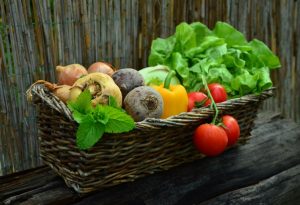
Think of it this way: If it wasn’t in that form in nature, there’s a good chance it’s not the best food choice that your body was designed to eat.
Look for fresh vegetables, fruits, unprocessed meats, eggs, nuts, seeds and avoid boxed items, cans, and convenience foods and make your meals at home.
An easy way to improve your health and avoid the dangers of processed food is to have a plan about what you will eat and to make meals from scratch at home. By doing so you avoid unhealthy purchases, and know without a doubt you are eating the right foods for optimal health and wellbeing.
If you would like help planning whole food meals please consider joining MealEasy. All of our meal plans are based on using unprocessed whole foods. You’ll see step-by-step how to make a huge variety of delicious healthy meals the easy way. Improve your diet significantly by giving it a try.
You Don’t Have To Spend Lavishly To Eat Well! Follow These Secrets to Spend Less at the Grocery Store
January 17 2016
Do you know that on average, Americans throw out more than 25% of the food they prepare? Following healthy balanced meal plans together with avoiding food wastage is the first and the simplest step to saving money on your grocery bills. By doing so you’ll do a better job at utilizing leftovers, while learning what to do with food that is past its peak, and most of all, you’ll be more organized.
Here are a few tips from the experts at MealEasy to spend less and eat well:
Why Eating Healthy Is the Ultimate Way to Lose Weight Permanently
January 16 2016
According to the Centers of Disease Control and Prevention and research published inthe Journal of American Medicine (JAMA), more than one-third of US adults – 34.9% or 78.6 million – are obese. These conditions, over time, tend to worsen becoming the leading cause of heart diseases, stroke, Type 2 diabetes and certain types of cancer. Investing time into planning out healthy meals eliminates the chances of impulsive or binge eating.
Is Eating The Right Food The Root Cause of The World’s Biggest Problems?
January 08 2016
What do you think?
Is the food that we eat the root cause of many of the world’s problems?
- Is the food we eat the root cause of most of our major diseases?
- Is it a major causes of our biggest financial issues?
- Is it the largest contributor to deaths?
Let us know what you think…




